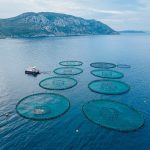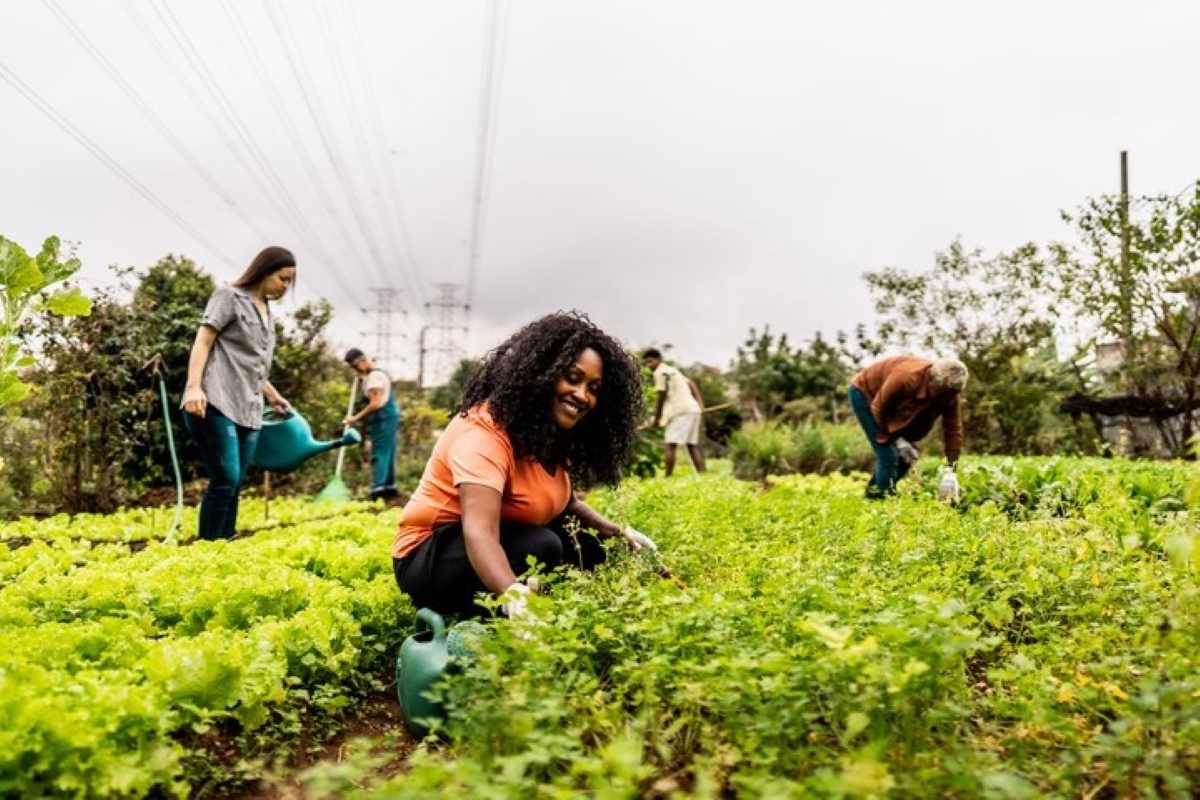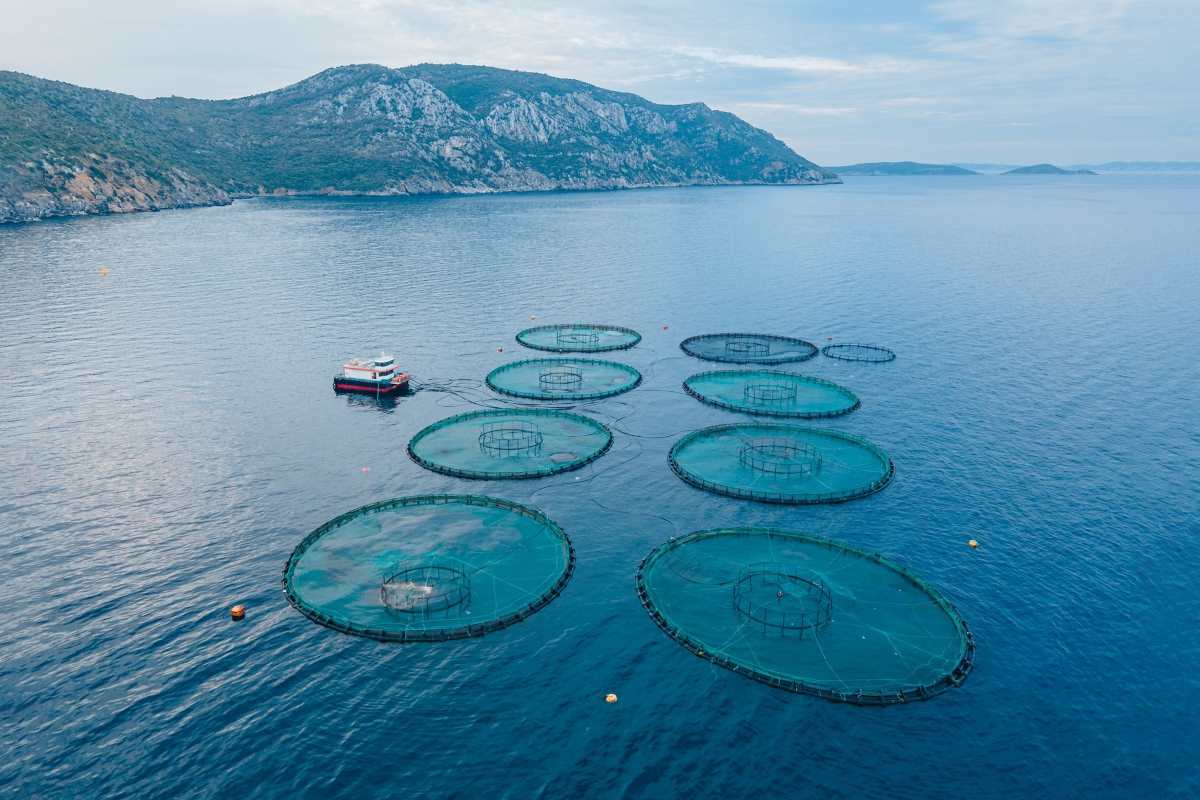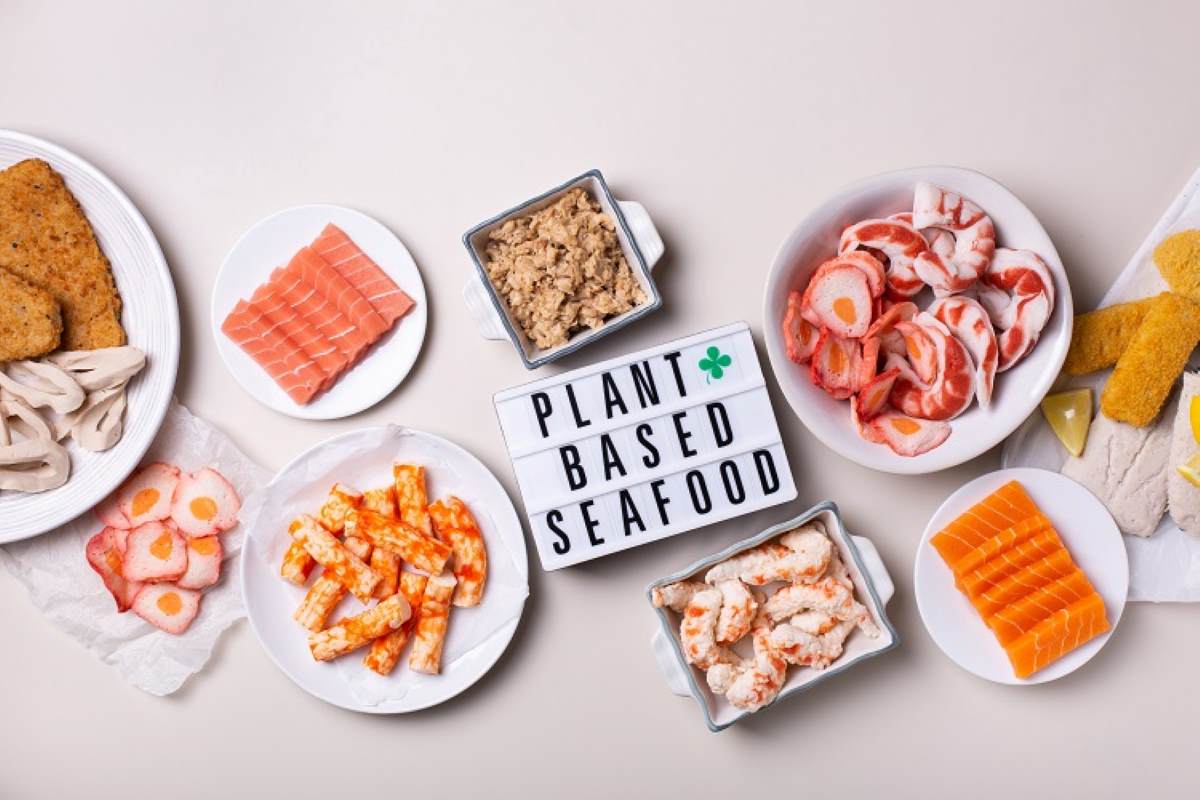The recent surge in interest in regenerative farming follows the rise of climate-related disasters worldwide. Imagine the upper crust and atmosphere of the planet Earth having their vitality replenished through farming. Unfortunately, conventional agricultural activities may make that a pipe dream. Several studies suggest that traditional agriculture is one of the major causes of climate change.
Unlike conventional farming, regenerative agriculture involves holistic and eco-friendly farming systems. Climate-smart agriculture prioritizes soil health and serves as a sustainable alternative to industrial farming.
This article provides a perspective on regenerative agriculture and how it can improve the future of the global food supply.
What Is Regenerative Farming?
Regenerative agriculture is a holistic approach to sustainable farming. It goes beyond mitigating one of the many faults of conventional agriculture. On the contrary, regenerative agriculture aims to produce food sustainably, and as a plus, cut greenhouse gas emissions, improve soil, water and air quality.
Folks with only sketchy knowledge of regenerative farming may mistake it as one of many efforts to nip the environmental havoc of industrial agriculture. However, it does cover most problems that have emerged since humans became versatile in large-scale and mechanized farming. For example, some of the core focuses of regenerative agriculture are ecosystem restoration, biodiversity, and soil health.

Now, it is necessary to clarify that regenerative agriculture is not universally static. Meaning it does not include a fixed set of rules that govern the practice of climate-smart farming. Meanwhile, regenerative agriculture is more of a guiding philosophy. For example, the soil regeneration techniques recommended for Farm A may be futile or even counterproductive for Farm B.
ALSO READ: How Nutrient Loss Occurs During Cooking (and How to Prevent It)
Core Principles and Practices
We shall be discussing four core practices that are peculiar to regenerative farming. Advocates of climate-smart agriculture affirm that these eco-friendly farming systems are the future of global food supply.
1. No-Till or Low-Till Soil Management
The goal of farming with reduced or zero tillage is to minimize soil disturbance. Soil scientists have discovered that leaving farmland in its natural form improves soil biodiversity and infiltration of surface water. Such soil management practices also reduce the likelihood of erosion on farmlands.
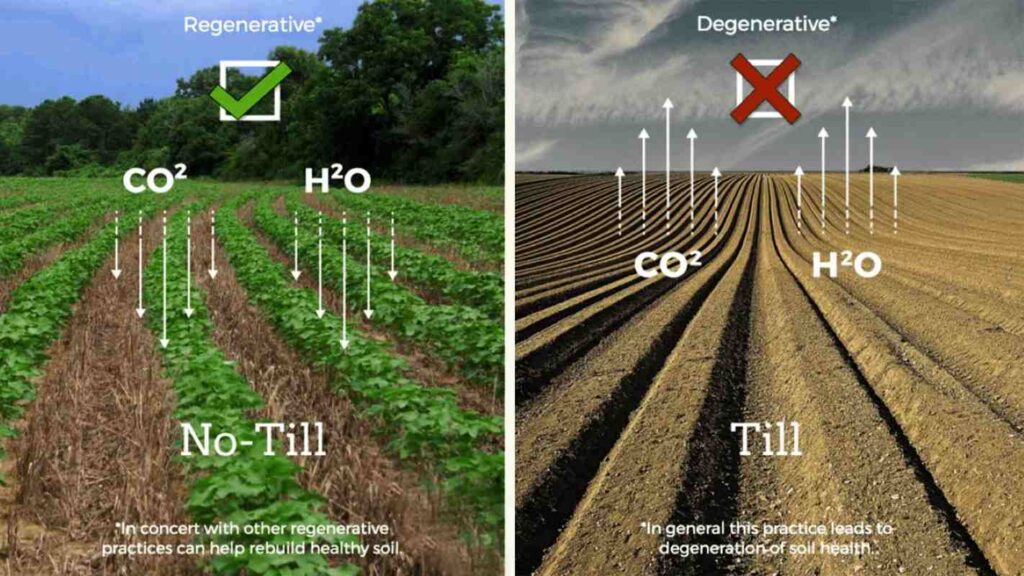
2. Cover Cropping and Crop Rotation
These are practices that largely involve replenishing depleted resources after every cycle of cultivation. Cover cropping prevents soil-to-atmosphere loss of water, suppresses pests and weeds. Similarly, the cover vegetation is often nitrogen-fixing, further enriching the soil. Crop rotation alternates the type of plant that is cultivated per season to control the cycle of nutrient depletion and replenishment.
3. Composting and Natural Fertilizers
This practice is one of the soil regeneration techniques that is also adopted for the cultivation of organic food. It involves formulating natural fertilizers on the farm or in a communal compost bank, by upcycling waste materials.
4. Integration of Natural Grazing and Nutrient Cycling
There is a viral video making rounds on social media of a farmer using a flock of ducks to rid their farmland of pests before the next planting season. While picking the field clean of bugs, the ducks litter the land with soil-enriching poo. A herd of cattle could graze on cover crops, leaving excreta and urine behind to serve as natural manure.
Benefits Beyond the Field
Regenerative agriculture benefits are not limited to the farmer, farmland, crop yield, or livestock alone. Experts suggest that these practices of sustainable land stewardship have larger-than-life benefits for the entire planet.
Research has it that regenerative agriculture sequesters carbon in the soil. Meaning the farmland becomes a mini carbon sink, thus contributing its little quota to reducing global warming.
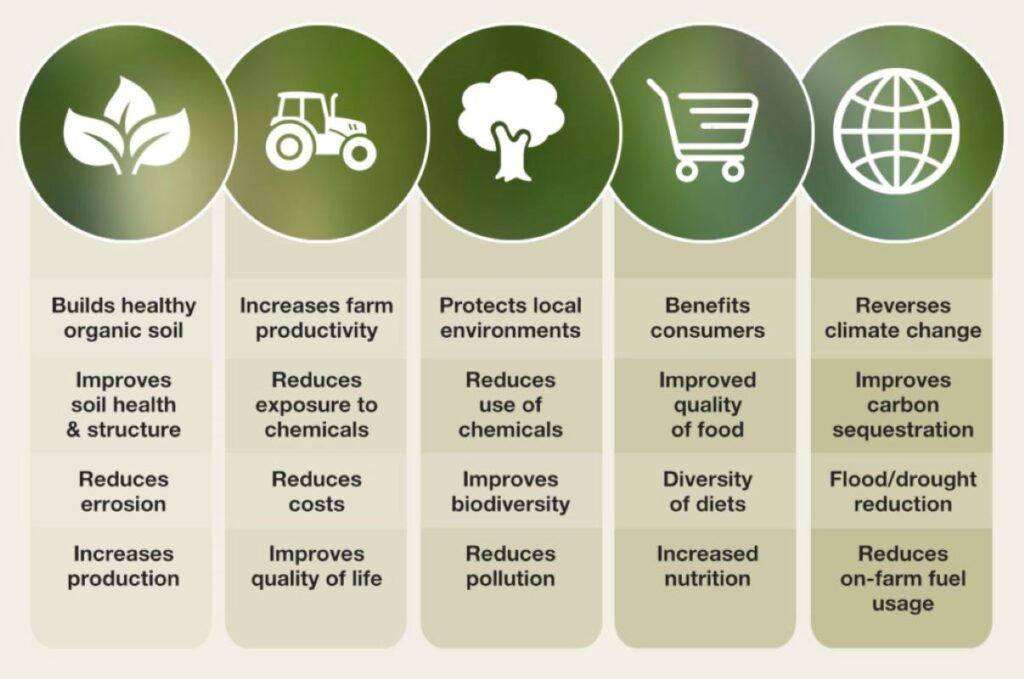
Regenerative agriculture improves soil climate resilience. A 2024 report by EOS Data Analytics suggests that soil health practices will increase the odds of a farm withstanding the rigors of extreme weather.
When there are active efforts to replenish soil nutrients naturally, crops will enjoy healthy growth. In addition, the harvested produce will be nutrient-dense, and even the consumers will get more vitality.
How It Compares to Other Farming Systems
Regenerative farming outshines both organic and conventional farming. Yes, they all involve the cultivation of crops and the rearing of livestock to ensure food security. However, they have divergent priorities, philosophies and practices.
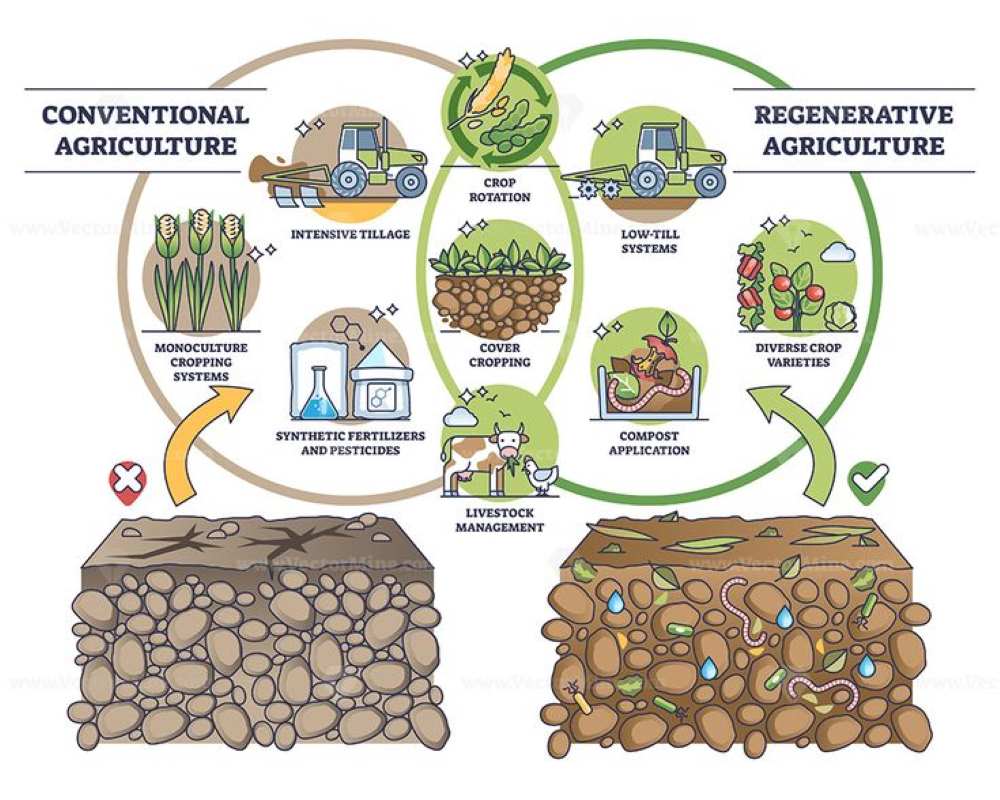
Regenerative agriculture is akin to organic farming in its use of natural inputs and the prioritization of soil health and biodiversity. However, regenerative agriculture is a step further as it includes carbon sequestration farming and active soil health management.
Barriers to Widespread Adoption
Beyond the eschewed virtues of regenerative farming, a no-holds-barred interaction with farmers may reveal that it is easier said than done. Some of the challenges that make it difficult for farmers to jump into the regenerative agriculture bandwagon are as follows:
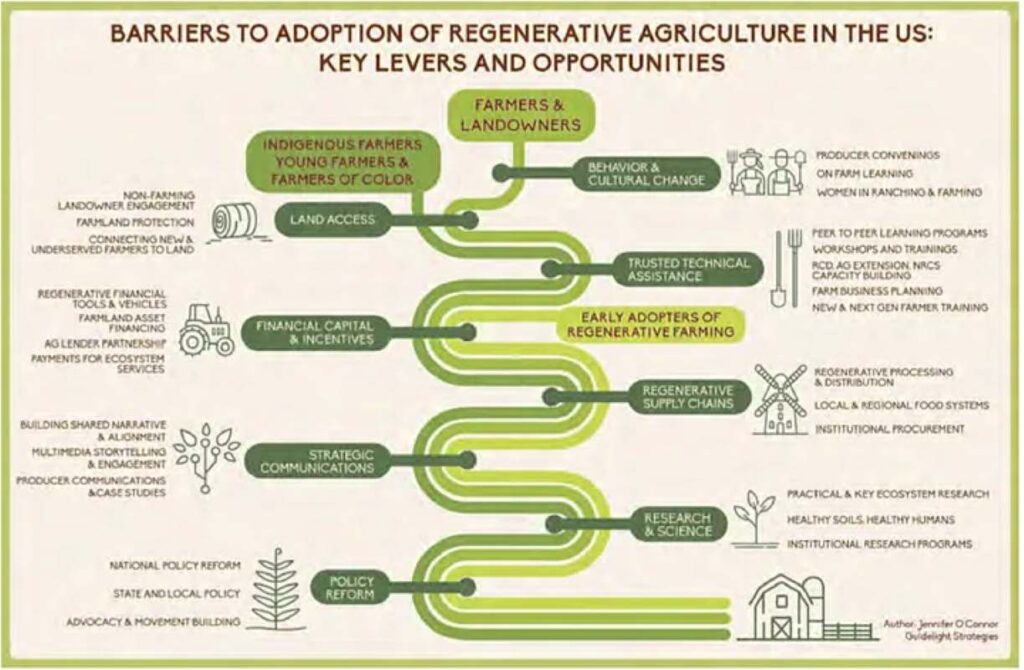
- Training and Financials: Most farmers get skeptical after counting the cost of transitioning from conventional to regenerative agriculture. Also, farmers who manage to squeeze out the capital may struggle financially during the transition period. Also, farmers who have already settled into the rhythm of conventional farming may shelf the idea of going for some regenerative farming training.
- Global Inconsistencies: As we explained earlier, regenerative agriculture is more of an agricultural philosophy with non-static practices. So, there is no global standard or recognized certification that governs the field of endeavor.
- Corporate and Intellectual Skepticism: The foremost stakeholders in the agricultural sector are not entirely in agreement with the acclaimed benefits of regenerative agriculture. There are scientists and big agricultural firms that naysay the ideology behind carbon sequestration farming.
ALSO READ: How is the Aldi Mondelēz Copycat Case Likely to Turn Out?
Global Movements and Brands Embracing It
Interestingly, several entities are supporting the regenerative farming cause around the globe. Multinational patrons like Nestlé, General Mills and Patagonia Provisions are keeping the regenerative supply chain going.
Also, there are multiple regenerative agriculture pilot projects popping up in Europe, Latin America and Africa. AgriCarbon and the Bayer-IICA joint initiative are already running in Africa, and the SOILRES project has started in multiple European countries. Yale’s deep dive into regenerative farming is a good signal from an academic institution.
It is undeniable that there are many hurdles that proponents of sustainable land stewardship need to outmanoeuvre. FoodPrint’s guide to regenerative agriculture points out some of them. However, the benefits of regenerative farming are too promising to ignore, and small-scale farmers have practiced some of those things over the years. Not being a farmer should not discourage you from supporting regenerative agriculture. A little advocacy here and pro-regenerative food choices there will go a long way in the cause.
If agriculture shaped civilization, perhaps regeneration will shape what comes next.

